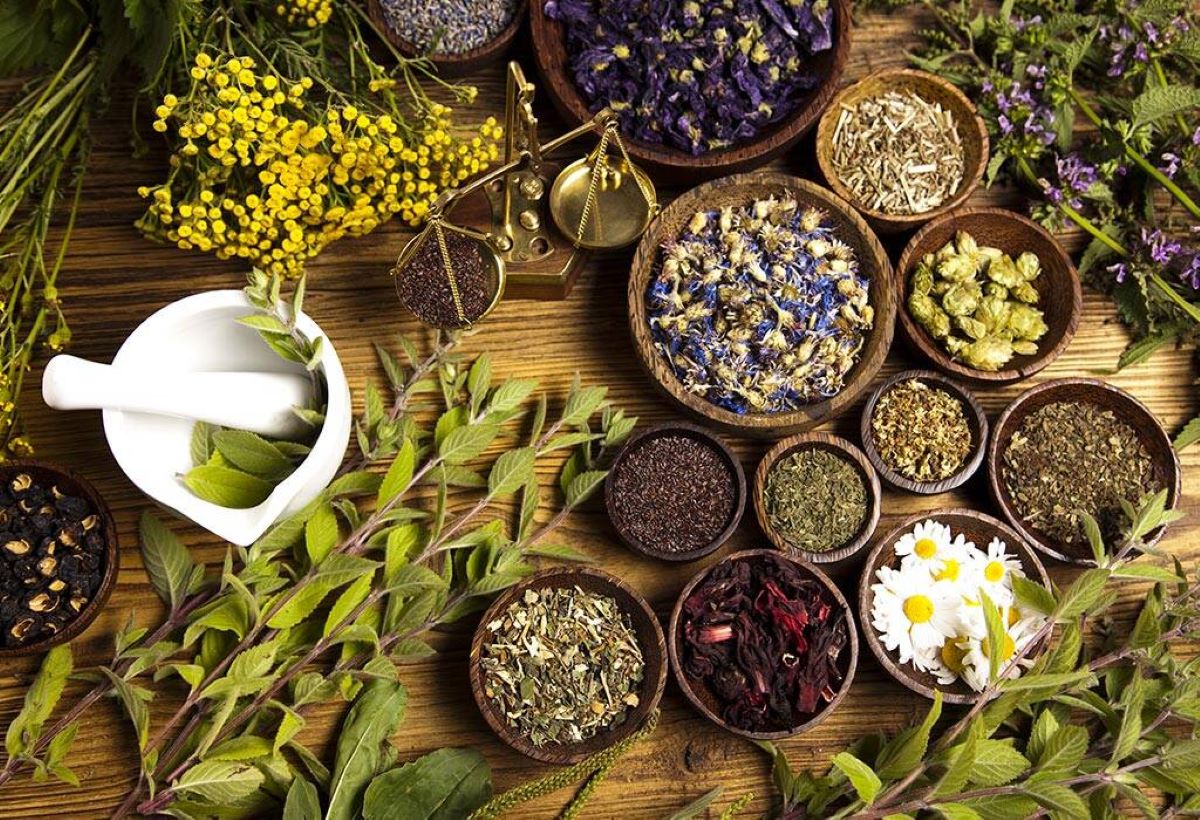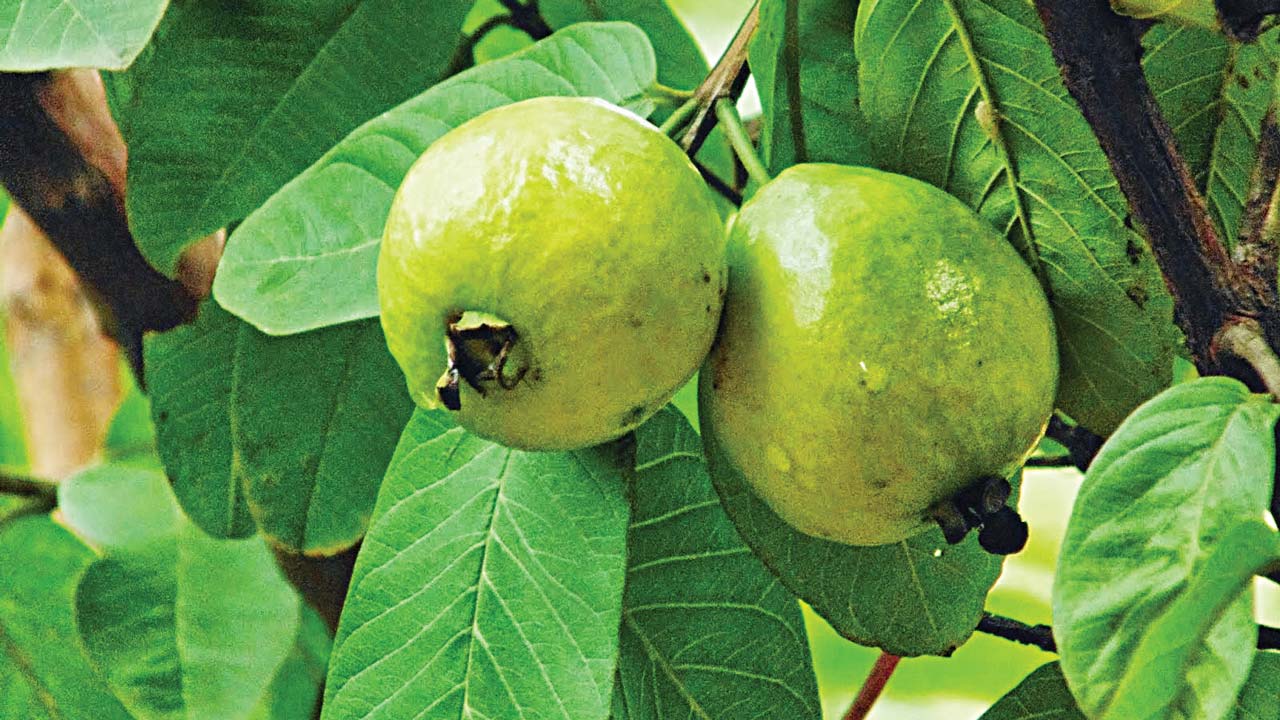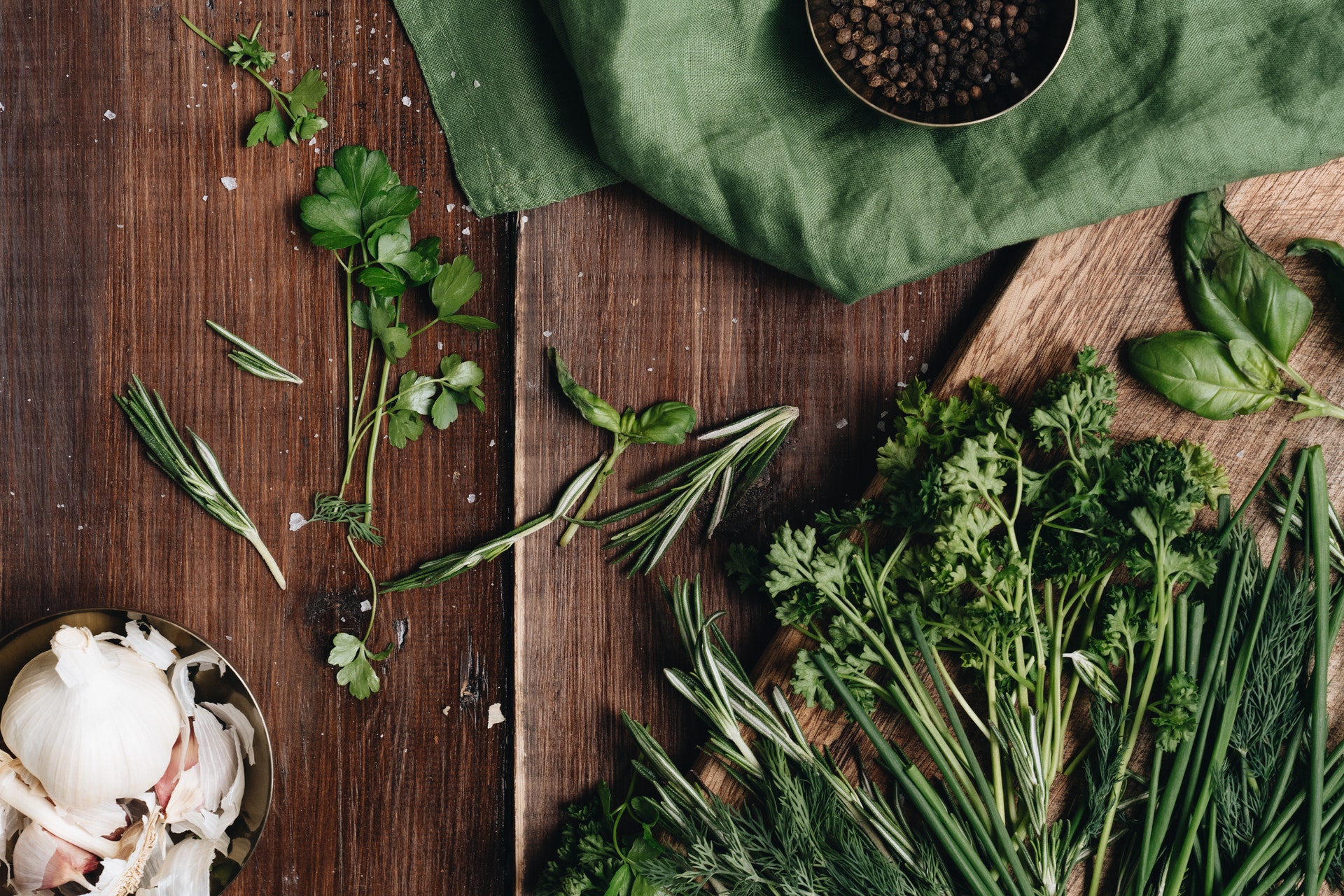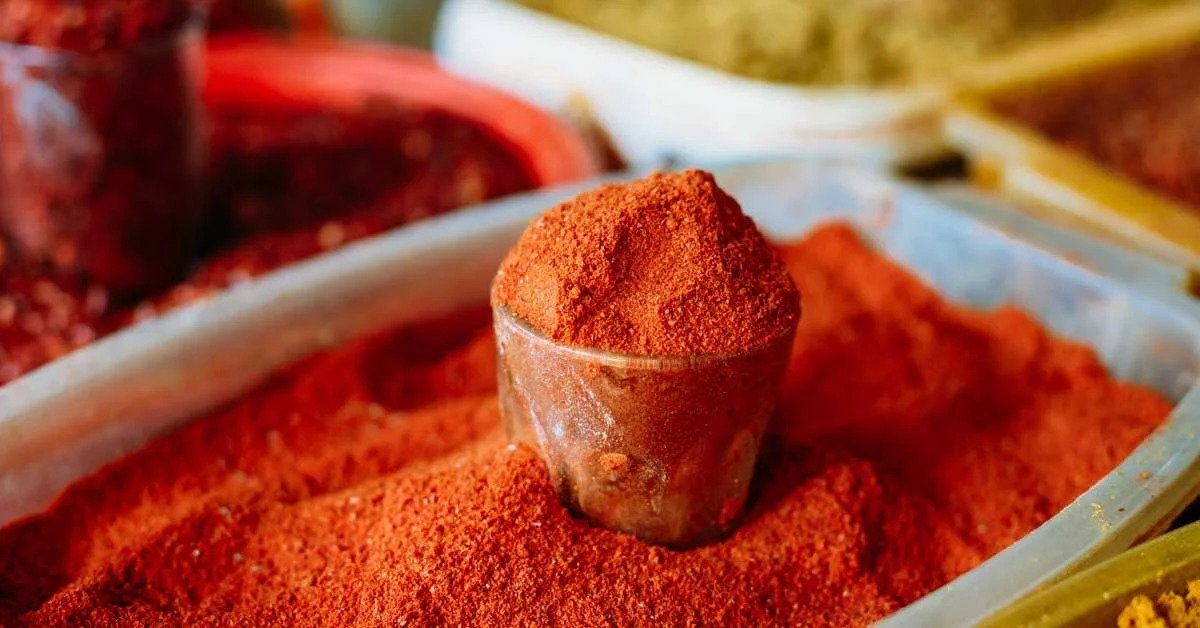Home>Gardening News and Trends>Gardening Trends>What Herbs Are Good For Fever


Gardening Trends
What Herbs Are Good For Fever
Published: September 28, 2023
Discover the latest gardening trends and find out which herbs are good for fever. Enhance your gardening skills and boost your health naturally.
(Many of the links in this article redirect to a specific reviewed product. Your purchase of these products through affiliate links helps to generate commission for Chicagolandgardening.com, at no extra cost. Learn more)
Table of Contents
Introduction
Welcome to the world of gardening trends! Gardening has always been a popular and rewarding hobby, but over the years, it has evolved and adapted to meet the changing needs and interests of gardeners all around the world. Whether you’re an experienced gardener or just starting out, staying up-to-date on the latest gardening trends can inspire and inform your gardening practices.
Gardening trends encompass a wide range of aspects, including plant selection, garden design, sustainability, and technology. By following these trends, you can not only create a beautiful and functional garden but also contribute to environmental conservation and make gardening more enjoyable and efficient.
In this article, we will explore some of the current gardening trends that are gaining popularity among gardening enthusiasts. From incorporating native plants to embracing organic gardening practices, these trends offer insights into creating sustainable and beautiful gardens. So, whether you’re looking to revamp your existing garden or start a new one, let’s dive into the fascinating world of gardening trends and discover how to make your green space bloom with style and eco-consciousness.
Herbs for Reducing Fever
When it comes to managing a fever, many people turn to natural remedies for relief. Herbs have been used for centuries for their medicinal properties, and there are several herbs known for their ability to help reduce fever and alleviate symptoms. Let’s explore some of these herbs:
- Willow Bark: Native to Europe and Asia, willow bark contains a compound called salicin, which is similar to the active ingredient in aspirin. It has been used for centuries to reduce fever and relieve pain.
- Elderflower: The delicate white flowers of the elder plant have long been used in traditional medicine for their anti-inflammatory and immune-boosting properties. Elderflower tea or syrup can help reduce fever and promote sweating to flush out toxins.
- Catnip: Often associated with its effects on cats, catnip is also a powerful herb for humans. It has antipyretic properties that can help reduce fever and promote relaxation. Catnip tea can be consumed or applied topically.
- Peppermint: Known for its refreshing aroma and cooling sensation, peppermint is also a great herb for reducing fever. Its anti-inflammatory and analgesic properties can help bring down body temperature and relieve discomfort.
- Yarrow: Yarrow is a versatile herb that has been used for its medicinal properties for centuries. It has diaphoretic properties, meaning it helps induce sweating and release heat from the body, making it effective in reducing fever.
- Ginger: Ginger is well-known for its anti-inflammatory properties and its ability to boost the immune system. It can help reduce fever by increasing circulation and promoting sweating.
- Boneset: Traditionally used to treat fever and flu-like symptoms, boneset is a powerful herb that stimulates the immune system and helps reduce fever. It can be consumed as a tea or taken in tincture form.
- Echinacea: Echinacea is a popular herb used to boost the immune system. It can also help reduce fever by stimulating the production of infection-fighting cells in the body.
- Garlic: Garlic is not only a common ingredient in cooking but also a potent herb for reducing fever. It has antimicrobial and immune-boosting properties that can help fight off infections and lower body temperature.
- Oregano: Oregano is known for its strong flavor and culinary uses, but it also has powerful antibacterial and antiviral properties. It can help reduce fever by supporting the immune system and fighting off pathogens.
Remember, it’s important to consult with a healthcare professional before using herbs to manage fever, especially if you have any underlying health conditions or are taking medications. While herbs can be effective in reducing fever, it’s essential to monitor your symptoms and seek medical attention if necessary.
Willow Bark
Willow bark, derived from the willow tree, has been used for centuries as a natural remedy for various ailments, including fever. It contains a compound called salicin, which has similar properties to aspirin, a commonly used medication for reducing fever and relieving pain.
Native to Europe and Asia, the willow tree has a long history of medicinal use. The bark of the tree is known for its anti-inflammatory and analgesic properties, making it an effective herb for reducing fever and alleviating symptoms associated with various conditions.
When taken internally, willow bark helps to lower body temperature by reducing inflammation and blocking the production of certain prostaglandins, which are chemicals in the body that contribute to fever and pain. It can be consumed in the form of capsules, tablets, teas, or tinctures.
One of the advantages of using willow bark as a natural fever reducer is that it is generally well-tolerated by most people. However, it is important to note that individuals who are allergic to aspirin or have a history of gastrointestinal ulcers may be sensitive to willow bark and should avoid its use.
It is recommended to consult with a healthcare professional before using willow bark to manage fever, especially if you are taking any medications or have underlying health conditions. They can provide guidance on the proper dosage and duration of use, taking into consideration your specific needs and medical history.
Although willow bark can be an effective herb for reducing fever, it is important to remember that it is not a substitute for medical care. If your fever persists or worsens, or if you experience severe symptoms, it is crucial to seek medical attention.
Elderflower
Elderflower, the delicate white blossom of the elder plant, has long been used in traditional medicine for its medicinal properties. Not only does it have a pleasant fragrance, but it also contains compounds that can help reduce fever and promote overall health.
Elderflower is known for its anti-inflammatory and immune-boosting properties, which make it an effective herb for managing fever. It has been used for centuries to alleviate symptoms associated with the common cold, flu, and other respiratory infections.
The primary way elderflower helps reduce fever is by promoting sweating. Sweating is a natural mechanism of the body to cool down and regulate body temperature. This process eliminates toxins from the body, helping to reduce fever and relieve discomfort.
Elderflower can be consumed in various forms, such as tea, syrup, or tincture. Elderflower tea is a popular choice and can be made by steeping dried elderflowers in hot water. The tea can be enjoyed alone or combined with other herbs for added benefits. Elderflower syrup can be used to sweeten beverages or drizzled over desserts, while tinctures are concentrated extracts that can be taken orally.
It is important to note that while elderflower is generally safe, some individuals may be allergic to it. If you have a known allergy to the elder plant or any plants in the same family (such as honeysuckle or jasmine), it is best to avoid elderflower or consult with a healthcare professional before using it.
As always, it is recommended to consult with a healthcare professional before using elderflower or any herbal remedy, especially if you have any underlying health conditions, are taking medications, or are pregnant or breastfeeding. They can provide personalized guidance on the proper dosage and help ensure its suitability for your specific situation.
Elderflower can be a wonderful addition to your natural fever-reducing regimen. However, it is important to remember that it is not a substitute for medical care. If your fever persists or worsens, or if you experience severe symptoms, it is crucial to seek medical attention.
Catnip
Catnip, often associated with its effects on cats, is also a powerful herb for humans, including its ability to help reduce fever. Although catnip is commonly known for its playful effects on feline friends, it has been used for centuries in traditional medicine for its therapeutic properties.
Catnip, scientifically known as Nepeta cataria, belongs to the mint family and is native to Europe and Asia. It contains a compound called nepetalactone, which has antipyretic properties that can help lower body temperature and reduce fever.
When consumed, catnip acts as a natural diaphoretic, meaning it promotes sweating. Sweating is an important mechanism that helps the body release heat and toxins, aiding in the reduction of fever and discomfort.
Catnip can be consumed in several forms, including as a tea, tincture, or capsule. Catnip tea is easy to make by steeping dried catnip leaves in hot water for several minutes. The tea can be consumed up to three times a day to help reduce fever and promote comfort.
It is important to note that while catnip is considered safe for most individuals, some people may experience mild side effects such as drowsiness or an upset stomach. If you are pregnant, breastfeeding, or have any underlying health conditions, it is advisable to consult with a healthcare professional before using catnip.
Furthermore, it is crucial to ensure that the catnip you are using is indeed intended for human consumption, as some products may be specifically marketed for cats and may not be suitable for human consumption.
As with any herbal remedy, catnip is not a substitute for medical care. If your fever persists or worsens, or if you experience severe symptoms, it is essential to seek medical attention. A healthcare professional will be able to provide a comprehensive evaluation and guide you in the best course of action for managing your fever.
Peppermint
When it comes to reducing fever, peppermint is an herb that holds great promise. Known for its refreshing aroma and cooling sensation, peppermint has long been used for its medicinal properties, including its ability to help bring down body temperature.
Peppermint, scientifically known as Mentha piperita, is a hybrid mint plant that is a cross between water mint and spearmint. It contains a compound called menthol, which has powerful anti-inflammatory and analgesic properties.
One of the ways peppermint helps reduce fever is by promoting vasodilation. This means that it widens the blood vessels and increases blood circulation, which can help dissipate heat from the body and bring down body temperature.
Peppermint can be consumed in various forms, such as tea, essential oil, or inhaled as steam. Peppermint tea is made by steeping fresh or dried peppermint leaves in hot water. The tea can be enjoyed multiple times a day to help reduce fever and provide relief.
It is important to note that while peppermint is generally safe for most individuals, some people may be sensitive to its menthol content or have allergies to the mint family. If you have a known allergy to peppermint or any other herbs in the mint family, it is best to avoid its use or consult with a healthcare professional before using it.
If you choose to use peppermint essential oil or inhale peppermint steam for its fever-reducing benefits, it is crucial to dilute the essential oil properly and use caution to avoid contact with the eyes or sensitive areas of the skin.
As always, it is recommended to consult with a healthcare professional before using peppermint or any other herbal remedies, especially if you have any underlying health conditions, are taking medications, or are pregnant or breastfeeding.
While peppermint can be an effective herb for reducing fever, it is important to remember that it is not a substitute for medical care. If your fever persists or worsens, or if you experience severe symptoms, it is crucial to seek medical attention.
Yarrow
Yarrow, scientifically known as Achillea millefolium, is a versatile herb that has been used for its medicinal properties for centuries. Among its many benefits, yarrow is known for its ability to help reduce fever.
Yarrow contains several bioactive compounds, including flavonoids and sesquiterpene lactones, that contribute to its medicinal properties. It has diaphoretic properties, meaning it helps induce sweating, which can aid in releasing heat from the body and reducing fever.
In addition to its fever-reducing properties, yarrow is also known for its antimicrobial and anti-inflammatory effects. These properties can help support the immune system and alleviate other symptoms that may accompany a fever, such as headache and body aches.
Yarrow can be consumed as a tea by steeping dried yarrow flowers and leaves in hot water for several minutes. The tea can be enjoyed up to three times a day to help reduce fever and promote sweating.
It is important to note that while yarrow is generally safe for most individuals, some people may be allergic to it or have stomach sensitivities. If you have known allergies or underlying health conditions, it is best to consult with a healthcare professional before using yarrow.
Additionally, if you are pregnant or breastfeeding, it is advisable to avoid using yarrow or consult with a healthcare professional prior to use, as its effects on pregnancy and lactation are not well-studied.
As with any herbal remedy, yarrow is not a substitute for medical care. If your fever persists or worsens, or if you experience severe symptoms, it is essential to seek medical attention. A healthcare professional will be able to provide a comprehensive evaluation and guide you in the best course of action for managing your fever.
Ginger
Ginger, known for its distinctive flavor and aroma, is not only a popular culinary ingredient but also a powerful herb for reducing fever. It has been used for centuries in traditional medicine for its anti-inflammatory and immune-boosting properties.
Ginger, scientifically known as Zingiber officinale, contains several bioactive compounds, including gingerol and shogaol, which contribute to its medicinal effects. These compounds have been found to have anti-inflammatory and antioxidant properties, making ginger an effective herb for reducing fever.
One of the ways ginger helps reduce fever is by increasing circulation in the body. Improved blood flow can aid in regulating body temperature and promoting the elimination of toxins. Additionally, ginger has a warming effect on the body, which can assist in breaking a fever.
Ginger can be consumed in various forms, such as raw, powdered, or as a tea. Ginger tea is made by steeping fresh ginger slices or grated ginger in hot water for several minutes. The tea can be consumed up to three times a day to help reduce fever and promote healing.
It is important to note that ginger is generally safe for most individuals. However, it may interact with certain medications or have contraindications for individuals with certain medical conditions. If you have underlying health conditions or are taking medications, it is best to consult with a healthcare professional before using ginger.
Additionally, large amounts of ginger may cause gastrointestinal discomfort in some individuals. If you experience any adverse reactions, it is best to discontinue use and consult with a healthcare professional.
While ginger can be an effective herb for reducing fever, it is important to remember that it is not a substitute for medical care. If your fever persists or worsens, or if you experience severe symptoms, it is crucial to seek medical attention.
Boneset
Boneset, also known as Eupatorium perfoliatum, is a powerful herb that has been used for centuries in traditional medicine to help reduce fever and relieve flu-like symptoms. Its distinctive name comes from its historical use in treating dengue fever, which was referred to as “breakbone fever” due to the severe body aches associated with the illness.
Boneset contains several bioactive compounds, including sesquiterpene lactones and polysaccharides, which contribute to its medicinal properties. These compounds have been found to have immune-stimulating and anti-inflammatory effects, making boneset an effective herb for reducing fever and promoting overall wellness.
The primary way boneset helps reduce fever is by stimulating the immune system, supporting the body’s natural defense mechanisms, and helping to regulate body temperature. Additionally, boneset has diaphoretic properties, meaning it can induce sweating, which aids in cooling the body and releasing heat.
Boneset can be consumed as a tea by steeping dried boneset leaves and flowers in hot water for several minutes. The tea can be consumed up to three times a day to help reduce fever and alleviate flu-like symptoms.
It is important to note that boneset should be used with caution, as large doses or prolonged use may cause gastrointestinal upset. It is recommended to consult with a healthcare professional before using boneset, especially if you have any underlying health conditions or are taking medications.
Pregnant or breastfeeding individuals should avoid the use of boneset, as its safety during pregnancy and lactation has not been established.
As with any herbal remedy, boneset is not a substitute for medical care. If your fever persists or worsens, or if you experience severe symptoms, it is crucial to seek medical attention. A healthcare professional will be able to provide a comprehensive evaluation and guide you in the best course of action for managing your fever.
Echinacea
Echinacea, also known as coneflower, is a popular herb that has gained recognition for its immune-boosting properties. It is often used to support the body’s natural defenses and promote overall wellness, including during times of fever and illness.
There are several species of echinacea, with the most commonly used being Echinacea purpurea and Echinacea angustifolia. The roots, flowers, and leaves of the plant contain various active compounds, including alkamides, polysaccharides, and flavonoids, which contribute to its medicinal benefits.
Echinacea has been shown to have immune-stimulating properties, enhancing the activity of immune cells that help fight off infections. By supporting the immune system, echinacea can help the body better combat pathogens that may contribute to fever.
Additionally, echinacea has anti-inflammatory effects, which can assist in reducing fever and alleviating associated symptoms such as inflammation and discomfort.
Echinacea can be consumed as a tea, tincture, or in supplement form. Echinacea tea can be made by steeping dried echinacea leaves or roots in hot water for several minutes. The tea can be enjoyed one to three times a day to help boost the immune system and potentially reduce fever.
It is important to note that while echinacea is generally safe for most individuals, it may cause allergic reactions in some people. If you have a known allergy to plants in the daisy family, which includes ragweed and marigolds, it is advisable to avoid the use of echinacea or consult with a healthcare professional before using it.
Furthermore, echinacea should not be used as a long-term preventive measure for fever or illnesses. It is best used as a short-term remedy to support the immune system during acute illnesses.
As always, it is recommended to consult with a healthcare professional before using echinacea or any herbal remedies, especially if you have any underlying health conditions, are taking medications, or are pregnant or breastfeeding.
While echinacea can be a beneficial herb for reducing fever, it is important to remember that it is not a substitute for medical care. If your fever persists or worsens, or if you experience severe symptoms, it is essential to seek medical attention.
Garlic
Garlic, a staple ingredient in many culinary dishes, boasts powerful medicinal properties that make it an excellent herb for reducing fever. Garlic, scientifically known as Allium sativum, has been used for centuries in various traditional medicine practices for its antibacterial, antiviral, and immune-boosting effects.
The key compound responsible for garlic’s therapeutic properties is allicin, which has been shown to have antimicrobial and anti-inflammatory effects. These properties can help combat infections and reduce inflammation, including during episodes of fever.
Garlic can be consumed in different forms, including raw, cooked, or as a supplement. Raw garlic has the highest allicin content, so incorporating fresh garlic into your meals can provide optimal benefits. However, if the taste or odor is too strong, garlic can also be cooked or added as a powdered supplement.
In addition to its fever-fighting properties, garlic helps support overall immune function, which is crucial during times of illness. A strong immune system can help the body fight off pathogens that may contribute to fever and other symptoms.
It’s important to note that while garlic is generally safe for most individuals, it may interact with certain medications or have contraindications for individuals with certain medical conditions. If you are taking medications or have underlying health concerns, it is advisable to consult with a healthcare professional before using garlic as a fever remedy.
Garlic has blood-thinning properties, so it should be used with caution by individuals taking anticoagulant medications or those with bleeding disorders. Additionally, topical use of garlic on the skin can cause irritation or allergic reactions, so it is important to avoid applying raw garlic directly to the skin.
While garlic can be an effective herb for reducing fever, it is not a substitute for medical care. If your fever persists or worsens, or if you experience severe symptoms, it is crucial to seek medical attention.
Oregano
Oregano, a flavorful herb commonly used in culinary dishes, offers more than just a delightful taste. It is also known for its medicinal properties, including its ability to help reduce fever. Oregano, scientifically known as Origanum vulgare, contains several compounds that contribute to its therapeutic effects, including carvacrol, thymol, and rosmarinic acid.
One of the key benefits of oregano is its antimicrobial properties, which can help combat bacterial, viral, and fungal infections that may be associated with fever. Additionally, oregano has anti-inflammatory properties that can assist in alleviating symptoms related to fever.
Oregano can be consumed as a spice in dishes or made into a tea. Oregano tea can be prepared by steeping fresh or dried oregano leaves in hot water for several minutes. The tea can be consumed up to three times a day to help reduce fever and promote healing.
It is important to note that while oregano is generally safe when consumed in culinary amounts, concentrated oregano oil or supplements should be used with caution. High doses of oregano oil may cause gastrointestinal upset or allergic reactions in some individuals.
If you are considering using oregano oil or supplements, it is advisable to consult with a healthcare professional, especially if you have any underlying health conditions, are taking medications, or are pregnant or breastfeeding.
While oregano can be a beneficial herb for reducing fever, it is important to remember that it is not a substitute for medical care. If your fever persists or worsens, or if you experience severe symptoms, it is essential to seek medical attention.
Conclusion
Herbs have long been used to support health and well-being, including in the management of fever. From willow bark to oregano, there are several herbs with properties that can help reduce fever and alleviate associated symptoms.
It is essential to note that while herbs can be effective in managing fever, they are not a substitute for medical care. It is crucial to consult with a healthcare professional if you have persistent or worsening fever, severe symptoms, or underlying health conditions.
When using herbs for fever reduction, it is important to consider the proper dosage and potential interactions or contraindications. Not all herbs are suitable for everyone, and individual sensitivities should be taken into account.
Remember to source herbs from reputable suppliers and follow proper preparation methods. Whether in the form of teas, tinctures, or capsules, it is important to understand the recommended usage and consult with a professional if needed.
While these herbs can help reduce fever and alleviate symptoms, it is also essential to prioritize rest, hydration, and the overall management of the underlying cause of the fever. Seeking medical attention is crucial for a comprehensive evaluation and appropriate treatment.
Incorporating herbs for fever reduction can be a natural and holistic approach to managing fever, but it is always important to prioritize your health and safety. Understanding the benefits and proper usage of herbal remedies is key to making informed decisions in your journey toward wellness.
Remember, herbs are just one tool in the toolbox of natural remedies. Listening to your body, seeking professional guidance, and practicing holistic self-care are all part of maintaining optimal health and well-being.










